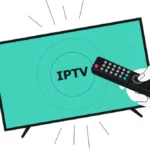Introduction
The way we consume television has undergone a dramatic transformation over the past two decades. From the days of bulky cable boxes and scheduled programming to sleek streaming platforms and on-demand viewing, the shift has been profound. One of the most significant innovations driving this change is IPTV — Internet Protocol Television. IPTV refers to the delivery of television content over internet networks rather than through traditional terrestrial, satellite, or cable formats. This method provides more flexibility, greater content variety, and enhanced viewing options for consumers.
For those looking to explore cutting-edge IPTV services, platforms like IPTV offer robust channel selections, advanced features, and user-friendly interfaces that are redefining the viewing experience. But to truly understand why IPTV is becoming the go-to choice for millions worldwide, we need to dive deeper into what it is, how it works, and what makes it different from traditional television.
What is IPTV?
IPTV stands for Internet Protocol Television, and it uses the internet to deliver television programming and video content. Unlike traditional television formats, which use cable, satellite, or terrestrial signals to transmit shows and movies, IPTV uses internet protocols — the same technology that powers websites, email, and file transfers.
Instead of broadcasting a single signal to everyone at the same time, IPTV sends the program directly to your device when you choose to watch it. This approach opens the door to features like:
- On-demand viewing
- Time-shifted TV (watching content after it has aired)
- Live streaming of TV channels
- Multi-device compatibility (smart TVs, smartphones, tablets, computers)
How IPTV Works
At its core, IPTV operates through a system of servers, internet connections, and media delivery networks. Here’s a simplified breakdown:
- Content Acquisition – The IPTV service provider sources content from TV networks, movie studios, and independent creators. This can include live TV channels, films, and original productions.
- Encoding and Compression – The video files are converted into digital formats suitable for streaming and compressed to optimize bandwidth usage without sacrificing quality.
- Content Delivery – Using Content Delivery Networks (CDNs), the media is sent to users based on their location, ensuring faster load times and reduced buffering.
- User Access – Viewers use an IPTV application or set-top box to request the content they want. The IPTV server streams the requested program directly to their device via the internet.
Types of IPTV Services
IPTV can be categorized into three main types:
1. Video on Demand (VOD)
VOD lets you choose what you want to watch and when you want to watch it. Platforms like Netflix, Amazon Prime Video, and Disney+ operate on this model.
2. Time-Shifted Media
Also known as catch-up TV, time-shifted media lets you watch previously aired content. For example, if you missed your favorite show’s broadcast last night, you can watch it later at your convenience.
3. Live IPTV
This delivers live broadcasts over the internet, similar to cable or satellite TV but without the traditional infrastructure. It’s popular for live sports events, news, and real-time entertainment.
Advantages of IPTV
1. Flexibility and Convenience
You can watch content on multiple devices — from large-screen TVs to smartphones — without being tied to a cable box.
2. On-Demand Access
Forget the rigid TV schedules; IPTV puts you in control of what you watch and when you watch it.
3. Greater Content Variety
Many IPTV services offer international channels, niche programs, and specialized content that traditional cable may not provide.
4. Cost-Effectiveness
Without the need for expensive infrastructure, IPTV often comes at a lower monthly cost than traditional cable or satellite packages.
5. High-Quality Streaming
Thanks to modern internet speeds and compression technology, IPTV can deliver Full HD and even 4K quality streams.
Challenges and Considerations
Despite its benefits, IPTV isn’t without drawbacks:
- Internet Dependency – A stable, high-speed connection is crucial. Slow or unreliable internet can lead to buffering or poor quality.
- Legal and Licensing Issues – Some IPTV providers may operate without proper rights to broadcast certain content, leading to potential legal risks for users.
- Device Compatibility – While most IPTV services support multiple devices, setup can be more complex than simply plugging in a cable box.
IPTV vs. Traditional Television
To better understand the appeal of IPTV, let’s compare it directly to traditional TV:
| Feature | IPTV | Cable/Satellite |
| Delivery Method | Internet | Physical cables or satellites |
| Content Control | On-demand, live, time-shifted | Fixed schedule |
| Device Support | Multiple devices | Mostly TV only |
| Geographic Limits | Global (with internet) | Region-specific |
| Cost | Often cheaper | Usually higher |
IPTV and the Rise of Smart TVs
The increasing popularity of smart TVs has played a major role in IPTV adoption. Most modern smart TVs come with built-in IPTV apps or the ability to download them. This means viewers can access live TV, movies, and on-demand content without additional hardware, making IPTV even more convenient.
The Role of IPTV in Sports Broadcasting
Sports fans are among the biggest beneficiaries of IPTV. Traditional TV often restricts sports coverage to specific channels or regions, but IPTV can provide access to games from all over the world. Services frequently offer:
- Multiple camera angles
- Interactive stats and real-time commentary
- Live pause and rewind options
For example, an IPTV subscriber could watch a European football match live, pause it to take a break, and then resume without missing any action.
Security and Privacy in IPTV
Because IPTV operates over the internet, security is an important concern. Reputable IPTV providers encrypt their streams to protect against unauthorized access. However, using unverified IPTV services can expose you to malware, data theft, or legal consequences.
To ensure safe viewing:
- Choose licensed IPTV providers
- Use a secure internet connection
- Consider using a VPN for additional privacy
The Global IPTV Market
The IPTV industry has seen explosive growth, driven by faster broadband speeds, better compression technologies, and consumer demand for flexible viewing options. According to market research, the global IPTV market is expected to reach hundreds of billions of dollars within the next decade.
Key growth drivers include:
- Expanding high-speed internet access
- Increasing demand for HD and 4K content
- Rising popularity of mobile video streaming
The Future of IPTV
Looking ahead, IPTV is set to become even more advanced, with features like:
- Interactive Content – Viewers participating in shows or events in real-time.
- AI-Powered Recommendations – Personalized viewing suggestions based on habits.
- Virtual Reality Integration – Immersive sports, concerts, and movie experiences.
Conclusion
IPTV is not just a new way to watch television — it’s a complete reimagining of how content is delivered, accessed, and enjoyed. By leveraging the power of the internet, IPTV allows viewers to break free from rigid schedules, access a wider variety of content, and enjoy higher-quality viewing experiences across multiple devices.
Whether you’re a sports enthusiast craving live global coverage, a movie buff looking for diverse films, or a casual viewer who values flexibility, IPTV offers something for everyone. With platforms like IPTV, the future of television is already here — and it’s streaming straight to your device.



